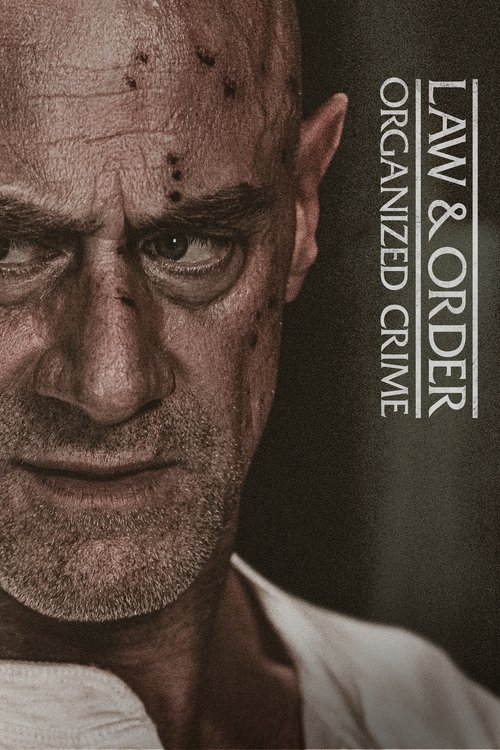
Ask Your Own Question
What is the plot?
The series opens with a glimpse into Jeffrey Dahmer's troubled childhood, showcasing his early signs of isolation and fascination with dead animals. Young Jeffrey is shown collecting animal carcasses and dissecting them, which foreshadows his later actions. His parents, Lionel and Joyce, are depicted as having a tumultuous relationship, with Joyce struggling with mental health issues and Lionel often absent due to work. This unstable home environment contributes to Jeffrey's growing sense of alienation.
As Jeffrey grows older, he becomes increasingly withdrawn and struggles with his sexual identity. After graduating high school, he is left feeling directionless. His father encourages him to pursue a career in the military, hoping it will instill discipline. Jeffrey enlists in the Army but is discharged after a short period due to alcohol abuse. This marks the beginning of his downward spiral into a life of crime.
Returning to Ohio, Jeffrey moves into his grandmother's house, where he continues to drink heavily. He begins to act on his darker impulses, luring young men to his home under the pretense of offering them money for modeling. The series depicts his first murder, where he drugs and kills Steven Hicks, a hitchhiker. Jeffrey dismembers the body and buries the remains in a nearby field, showcasing his growing detachment from the gravity of his actions.
The narrative then shifts to the late 1980s, where Jeffrey has moved to Milwaukee. He continues to target young men, often from marginalized communities. The series portrays several of his encounters, including the murder of Anthony Sears, whom he lures to his apartment. Jeffrey's methods become more refined; he uses drugs to incapacitate his victims before killing them. The emotional weight of his actions is highlighted through flashbacks of his childhood and the internal conflict he faces.
As the series progresses, Jeffrey's life becomes increasingly chaotic. He is shown struggling with his addiction to alcohol and the compulsion to kill. His interactions with neighbors and friends reveal a facade of normalcy, but underneath, he is spiraling out of control. The tension builds as he becomes more reckless, leading to the murder of several more victims, including a young boy named Konerak Sinthasomphone.
In a pivotal scene, Konerak escapes from Jeffrey's apartment after being drugged. He is found by police, but Jeffrey convinces them that Konerak is his boyfriend and that he is simply intoxicated. The officers, failing to recognize the signs of abuse, return Konerak to Jeffrey, who subsequently kills him. This moment underscores the systemic failures that allow Jeffrey to continue his killing spree.
The series also delves into the lives of the victims' families, particularly focusing on Rita Isbell, the sister of victim Errol Lindsey. Her emotional turmoil is depicted during the trial, where she confronts Jeffrey in court, expressing her pain and anger. This scene is powerful, showcasing the impact of his actions on the families left behind.
As the investigation intensifies, police finally catch on to Jeffrey's activities after a victim escapes and leads them back to his apartment. The series details the discovery of evidence, including photographs of dismembered bodies and human remains. The police are horrified as they piece together the extent of his crimes.
The climax of the series occurs during Jeffrey's arrest, where he is taken into custody. The emotional weight of his actions is explored through his interactions with law enforcement and the media. Jeffrey's demeanor is calm and detached, revealing his inability to fully grasp the horror of what he has done.
The final episodes focus on the trial, where Jeffrey is charged with multiple counts of murder. The series portrays the courtroom drama, highlighting the testimonies of victims' families and the psychological evaluations of Jeffrey. He ultimately pleads guilty but insane, which leads to a controversial verdict.
In the closing scenes, the series reflects on the aftermath of the trial and the impact of Jeffrey's crimes on the community. It shows the ongoing pain of the victims' families and the societal issues surrounding race, sexuality, and mental health. The series ends with a haunting reminder of the lives lost and the darkness that can exist within individuals.
What is the ending?
In the ending of "DAHMER - Monster: The Jeffrey Dahmer Story," Jeffrey Dahmer is apprehended and ultimately sentenced to life in prison. The series concludes with his violent death at the hands of a fellow inmate, highlighting the consequences of his horrific actions. The emotional toll on the families of his victims is also emphasized, showcasing their grief and the lasting impact of his crimes.
As the final episodes unfold, we see Jeffrey Dahmer in prison, grappling with the reality of his life sentence. He is isolated, reflecting on his past and the atrocities he committed. The series captures his internal struggle, revealing moments of remorse and confusion about his identity. However, this introspection is overshadowed by the overwhelming weight of his actions.
In a pivotal scene, Dahmer interacts with other inmates, trying to navigate his new environment. He attempts to fit in, even sharing details about his crimes, which only serves to alienate him further. The tension builds as he becomes aware of the danger he faces from other prisoners who are aware of his notoriety.
The narrative shifts to the families of Dahmer's victims, particularly focusing on their pain and anger. We witness emotional testimonies during the trial, where family members confront Dahmer, expressing their grief and the irreparable damage he has caused. This culminates in a powerful moment where they demand justice, emphasizing the human cost of his actions.
As the series reaches its climax, Dahmer's fate is sealed when he is attacked by a fellow inmate named Christopher Scarver. In a harrowing scene, Scarver confronts Dahmer in the prison gym, where he brutally murders him. The act is swift and violent, underscoring the brutal reality of prison life and the consequences of Dahmer's past.
The series concludes with a somber reflection on the aftermath of Dahmer's crimes. The families of the victims are shown grappling with their loss, while Dahmer's life is extinguished in a moment of violent retribution. The final scenes serve as a haunting reminder of the pain inflicted by his actions, leaving viewers with a sense of the profound impact of his crimes on countless lives.
Who dies?
In "DAHMER - Monster: The Jeffrey Dahmer Story," several characters meet tragic ends due to the actions of Jeffrey Dahmer. Below is a detailed account of the key deaths depicted in the series:
- Steven Hicks:
- Circumstances of Death: Steven Hicks was the first known victim of Jeffrey Dahmer. The series portrays their meeting in 1978 when Dahmer, then a teenager, picks up Hicks while hitchhiking. After drinking together, Dahmer becomes increasingly uncomfortable with Hicks's presence. In a moment of panic and fear of being rejected, Dahmer bludgeons Hicks with a dumbbell and subsequently strangles him to death.
-
Emotional State: Dahmer is depicted as conflicted; he craves companionship but is also deeply troubled by his impulses. The act of murder is portrayed as a culmination of his internal struggle, leading to a chilling sense of detachment afterward.
-
Steven Tuomi:
- Circumstances of Death: In 1989, Dahmer meets Steven Tuomi at a bar and lures him back to his hotel room. The series shows Dahmer's escalating need for control and dominance. He drugs Tuomi and, upon waking, finds that he has killed him, though he does not remember the act. Dahmer then dismembers Tuomi's body and disposes of it.
-
Emotional State: This death marks a turning point for Dahmer, as he begins to realize the extent of his violent tendencies. He experiences a mix of horror and fascination with his actions, reflecting a deepening psychological turmoil.
-
Anthony Sears:
- Circumstances of Death: In 1989, Dahmer meets Anthony Sears at a gay bar. After a night of drinking, Dahmer lures Sears to his apartment, where he drugs him and ultimately kills him. Dahmer is shown to be increasingly methodical in his approach, taking photographs of Sears's body post-mortem.
-
Emotional State: Dahmer's emotional detachment grows, and he exhibits a chilling calmness as he engages in his gruesome rituals. This reflects his deepening obsession with control and the macabre.
-
Konerak Sinthasomphone:
- Circumstances of Death: In 1991, Dahmer lures Konerak, a 14-year-old boy, to his apartment. After drugging him, Dahmer attempts to keep him under control. Konerak manages to escape but is returned to Dahmer by police, who are misled by Dahmer's manipulations. Later, Dahmer kills Konerak, dismembering him in a horrific act that showcases his complete disregard for life.
-
Emotional State: This incident highlights Dahmer's escalating depravity and the tragic failure of the system to protect vulnerable individuals. His emotional state is one of cold calculation, as he views his victims as mere objects.
-
Other Victims:
- The series also references several other victims, including those who were murdered in the early 1990s. Each death is depicted with a focus on Dahmer's growing compulsion and the chilling normalcy of his life juxtaposed with his horrific actions. The emotional weight of these deaths is felt through the families and communities affected, showcasing the broader impact of Dahmer's crimes.
Throughout the series, the deaths are not just plot points but serve to illustrate Dahmer's complex psychological landscape, his motivations, and the tragic consequences of his actions on the lives of his victims and their families. The emotional depth and horror of each scene are captured with a focus on the humanity of the victims, contrasting sharply with Dahmer's chilling detachment.
Is there a post-credit scene?
In "DAHMER - Monster: The Jeffrey Dahmer Story," there is no post-credit scene. The series concludes with a powerful final episode that encapsulates the emotional weight of the story, focusing on the aftermath of Dahmer's crimes and the impact on the victims' families. The narrative wraps up without any additional scenes after the credits, leaving viewers to reflect on the harrowing events and the broader implications of the story. The absence of a post-credit scene emphasizes the seriousness of the subject matter and the real-life tragedy that unfolded.
What motivated Jeffrey Dahmer to commit his crimes?
Jeffrey Dahmer's motivations stemmed from a complex interplay of psychological issues, including a deep-seated need for control and a desire for companionship. His childhood experiences, marked by feelings of isolation and neglect, contributed to his later actions. As he grew older, Dahmer's fantasies evolved into a compulsive need to dominate and possess his victims, often leading to a disturbing blend of sexual desire and a longing for connection.
How did Dahmer's relationship with his father influence his actions?
Dahmer's relationship with his father, Lionel, was strained and marked by a lack of emotional connection. Lionel's obsession with his work and his dismissive attitude towards Jeffrey's interests left the young Dahmer feeling abandoned. This emotional neglect contributed to Dahmer's feelings of inadequacy and isolation, which later manifested in his violent behaviors. The series portrays Lionel's attempts to understand his son, but ultimately highlights the disconnect that fueled Dahmer's dark path.
What role did the police play in Dahmer's capture?
The police played a critical role in Dahmer's capture, but their initial responses were marred by negligence and systemic failures. After one of Dahmer's intended victims, Konerak Sinthasomphone, escaped and flagged down police, they returned him to Dahmer despite clear signs of distress and evidence of foul play. This moment underscores the tragic consequences of racial bias and the failure to take the concerns of marginalized communities seriously, ultimately allowing Dahmer to continue his crimes for longer than he should have.
How did Dahmer's victims' families react to the revelations of his crimes?
The families of Dahmer's victims experienced profound grief and anger upon learning the details of his crimes. The series depicts their struggles with loss and the impact of Dahmer's actions on their lives. Many family members felt betrayed by the justice system, which failed to protect their loved ones. The emotional turmoil is palpable, as they grapple with the horror of what happened and the societal indifference towards the lives of marginalized individuals.
What was the significance of the 'demon' that Dahmer referred to in the series?
In the series, Dahmer refers to a 'demon' that he feels compels him to commit his heinous acts. This metaphor represents his internal struggle with his darker impulses and the sense of being overtaken by something beyond his control. It illustrates his awareness of the moral depravity of his actions while simultaneously depicting his inability to resist the urges that drive him to kill. This internal conflict adds depth to his character, showcasing the torment he experiences as he grapples with his identity.
Is this family friendly?
"DAHMER - Monster: The Jeffrey Dahmer Story" is not family-friendly and contains several potentially objectionable or upsetting scenes and aspects that may be distressing for children or sensitive viewers.
-
Graphic Violence: The series depicts violent acts, including murder and dismemberment, which are shown in a detailed and unsettling manner.
-
Sexual Content: There are scenes that involve sexual violence and exploitation, which are portrayed in a disturbing context.
-
Substance Abuse: Characters are shown using drugs and alcohol, which may be triggering for some viewers.
-
Mental Health Issues: The show explores themes of mental illness, including the psychological struggles of both Jeffrey Dahmer and his victims, which may be distressing.
-
Death and Grief: The emotional impact of loss and the reactions of families affected by Dahmer's crimes are depicted, showcasing deep sorrow and trauma.
-
Real-Life Crime: The series is based on true events, which may be particularly upsetting for those sensitive to stories of real-life violence and tragedy.
Due to these elements, viewer discretion is strongly advised.


























